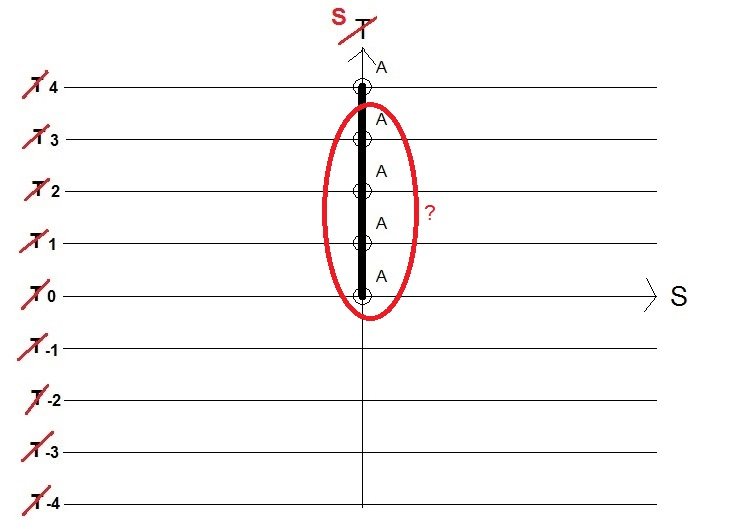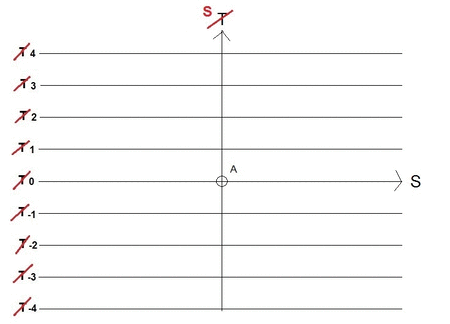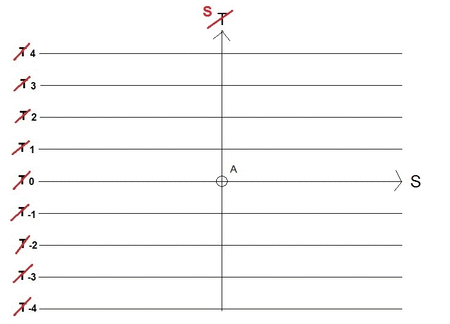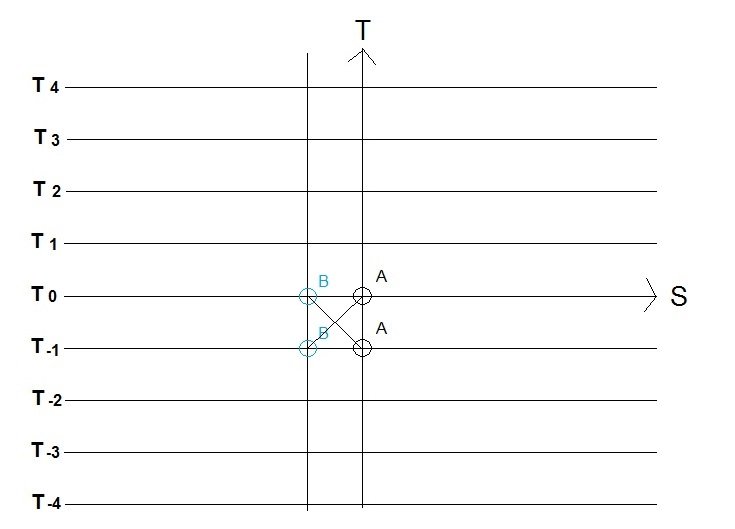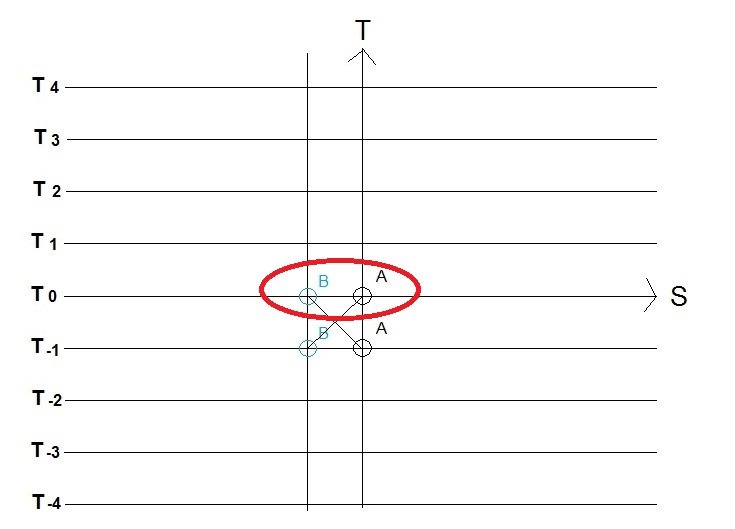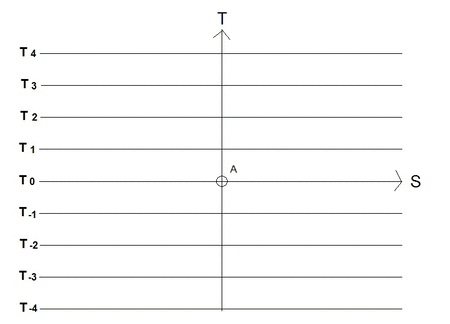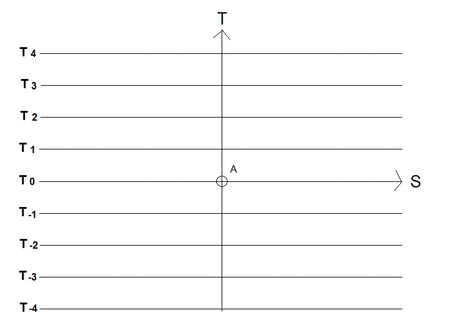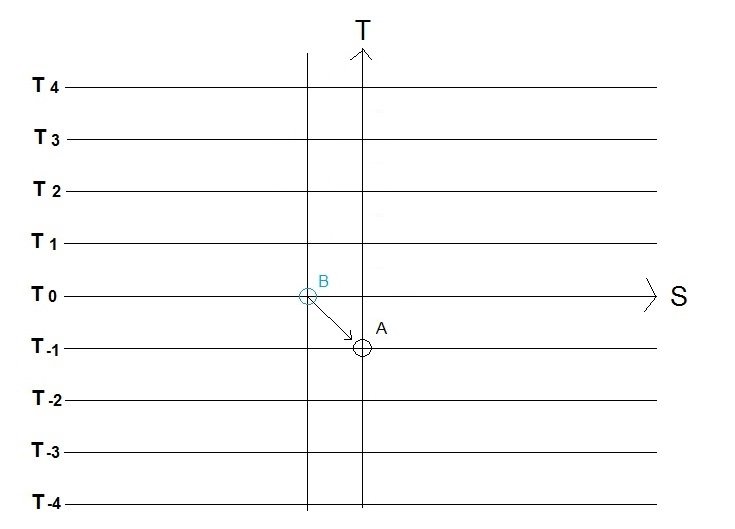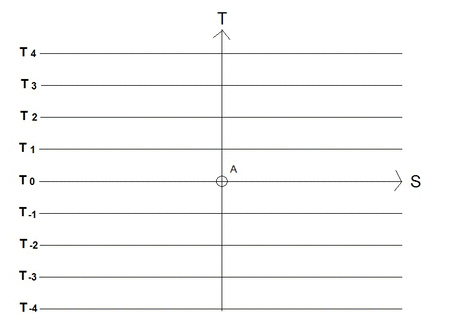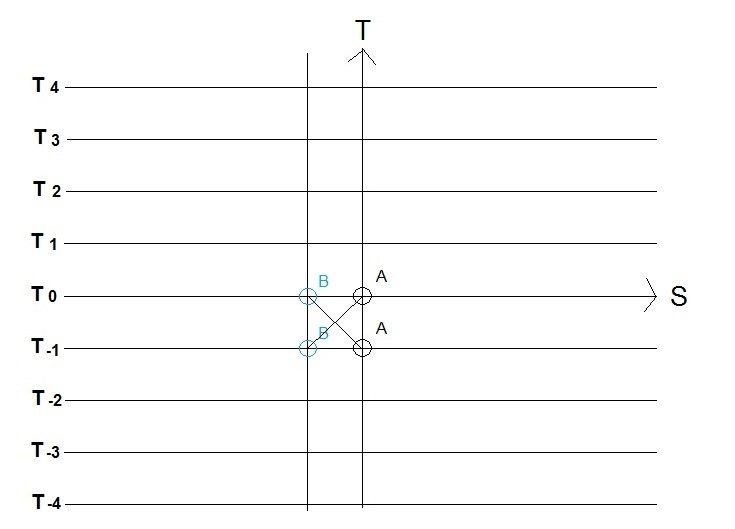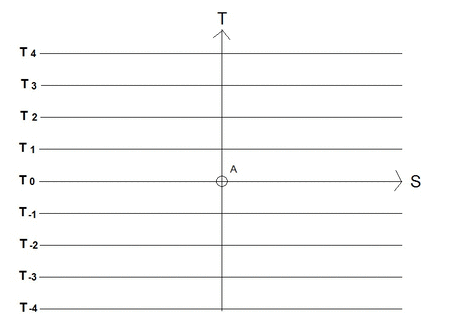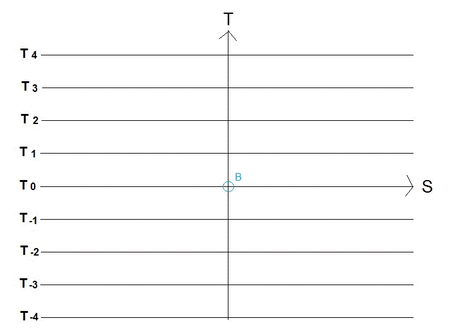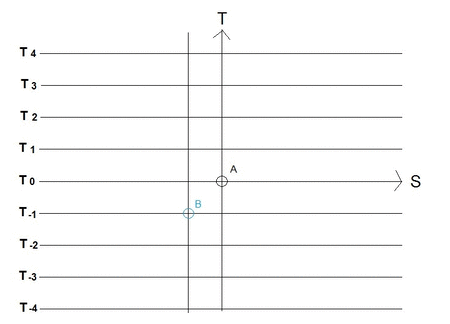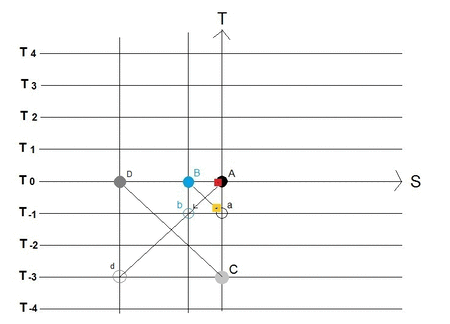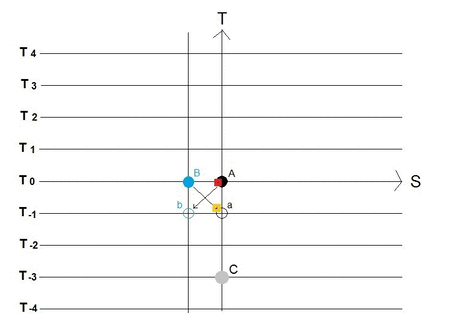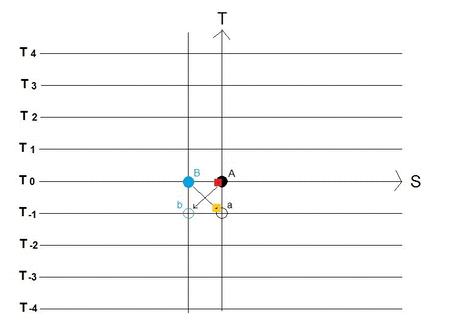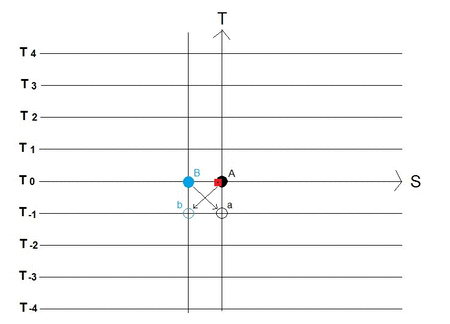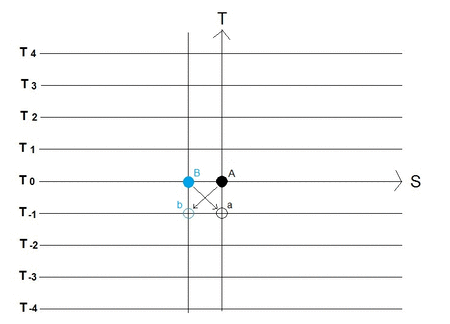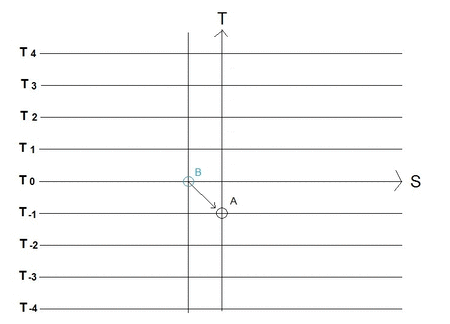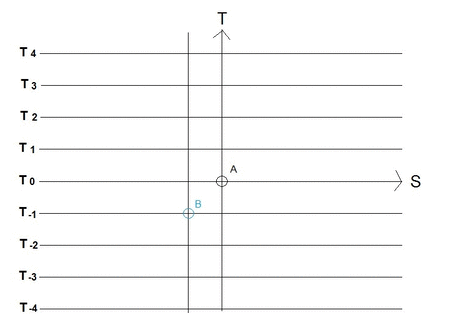-
Posts
6258 -
Joined
-
Last visited
-
Days Won
2
Content Type
Profiles
Forums
Events
Everything posted by michel123456
-
Yes. You said it much better than me. Since it "occupies one unique set of coordinates" (only one time coordinate for one's current location in spacetime), it means at this specific time & location, there is no particle at the previous time coordinate & location, and there is no particle in the forward time coordinate & location. The other way out is to conclude that in the previous & forward locations we have the same particle and in this case this is not "motion" in time. And further, because it is bizarre to have a vacant coordinate (is it possible to have a void in the 4D universe behind and in front of us??), the answer is that there is another (hypothetical) particle in previous time coordinate & location, and there is another (hypothetical) particle in the forward time coordinate & location. That's another point of view. Consisting in saying for example that time is degree of freedom in Space. In this case, Time is not properly a dimension, like Space is. And then I am completely wrong. But is it compatible with GR? Yes. I agree that Paris existed in 1800, I am not discussing this. What i mean is that Paris in 1800 is not directly observable, and paris in the year 3000 is not directly observable. What says that paris existed is our record of it. My speculation states that all observers from our observable Universe will theoretically agree on that (because we are linked by the symmetry I See You/You See Me). But an hypothetical observer from an hypothetical universe behind us or forward, will observe & record something different.
-
!! But when I propose that ancient & future spacetime coordinates are empty you are disagreeing. How else do you understand the word "move"?
-
Maybe to help you understand my way of thinking: I am speculating that we are not 4D entities, but 3D entities sliding in time. The "room in time" we call "the future" is empty (we are not there yet) and in an astonighing way the "room behind us" we call "the past", is also empty (we are not there any more).
-
I am happy to read that. Well understood. If you pick one from the set , say "A sitting at X0 at T0", don't you have an object at hand? This chain of events I call a path. In utterly wrong graph 15, the bold line is a path. There is only a single 3D object sliding in Space. My speculation is that in Time the same exactly happens: you have a 3D object sliding in Time. And i really don't understand why it is so difficult to accept.
-
OK my message does not go forward. Back to the basics: Motion I have momentarily edited some of my graphs to depict motion in Space. Time has been erased & replaced by space. Here a ball (labeled A) sliding on a desk graph 14 No more Time on the graph, no more spacetime diagram, only a ball sliding in space. The ball changes coordinates as time passes by. And here below graph 15, I hope we can all agree that it is NOT an accurate depiction of motion: Graph 15 utterly wrong. The ball does not multiply when changing coordinates. The "multiplication" is a property that we attribute to Time: the ball is supposed to persist in Time. While Space has no such a property. Any comment so far?
-
Sort of. The only thing I take from GR so far is constant c (the delay). I am not yet interested to introduce cosmological measurements. When I wrote : "Then say that the horizontal segment from A to B is the entire Observable Universe." the important word is IS. To me there is a split between what information we get (the image) and what is. In graph 12 the red dot is what is. The orange dot is what is observed. It is a map. A spacetime diagram is a map. A way for us to depict reality. Can we agree on this?
-
"Reverse timely order"? I don't want to show that. I realize quite well that my ideas are not welcome. It is hard to put people into thinking differently from what they have learned, or in this case what they think evidence is made of (the past cannot change & thus is frozen in the Block universe). On one hand they'd like to learn new things, on the other they don't want to change anything into what has been accepted. They would accept only new input. That reduces my moves very much.
-
No. and no.
-
We can't cross the same river twice... Complications are generally not needed to explain reality... Then say that the horizontal segment from A to B is the entire Observable Universe.
-
I know. I don't think I have introduced anything new. If you & me sit on a chair at 1 meter interval, we are sharing the same time. The delay of the graph will be ridiculously small but still exists. If we increase the distance between our chairs, the time gap will increase but we will still share the same T. You can increase the distance infinitely, there is no reason for the situation to change, as long as we are both sitting still on a chair. There is no scale on the graph. If I can observe a far away Galaxy, then theoretically an alien on this Galaxy can also observe me(1). Like Alex & Beatrix. The alien is not in the past, he has traveled in time as we did. And the alien is not viewed by someone in his future. As we are not currently under the scrutiny of a future alien. (1) I know it hasn't left the Milky Way but Voyager can look at us.https://www.nasa.gov/mission_pages/voyager/multimedia/pia00452.html
-
Using my protocol, yes A & B can be very far apart. As long as one observes the other, the reverse applies. I see you, you see me. Except if you disappeared in some explosion. It works for the entire Observable Universe. IOW this planet on this galaxy billion light years away is not billion light years in the past. Its image took billion years to travel to us. At this moment, this planet is on the horizontal line of the graph at T=0. Exactly as Beatrix, if I am Alex the observer. A spacetime diagram is a depiction of events: it is the story of A & B as seen by A or B, or by any other observer that can observe A & B. My graphs show that there may be more than that: observers that cannot observe A & B & reversely, observers that A & B cannot observe. Now, you are correct that by animating them I am introducing a second time dimension. But a moving slot upon a block Universe is also adding a time dimension. It is the same as a standing slot & a movable BU, like an old fashioned camera lens & a movie film.
-
Well understood. But I think it does not explain how things are going on. Look at it back again. It seems you are agreeing till graph 4 (here below)graph 4 In this graph we have simply Alex standing still, looking at Beatrix, a few meters away (no relativistic velocity involved). The only thing that is counted for is the gap in time, the information delay (whatever value it takes). Alex & Beatrix stand next to each other, where are they currently on this diagram? See below: There they are: they are together in time, next to each other. Say on Monday 9th of March 2020, 11.01 in the morning. They are not Alex 9th March & Beatrix 1st of January. (beware before giving rep.points, I have edited this post)
-
Yes. If it is considered as an argument I can step into this, but I am afraid to escape the important thing. important differences are that a Minkowski diagram is static & there is no ct vertical axis in mine, only T.
-
If you make the comparison between graph 3 (accepted) & graph 5 (speculation), which one is simpler? If I can show that the multiple A's of graph 3 are redundant, isn't that a good point? Even if it is harder to understand? That's what I am disputing. To stop me you have to convince me: show me where I made a mistake. No it doesn't "work just fine". Our theories are missing a lot. The cosmological measurements (based on theories) are off by 85% of matter and I don't know how much energy. My explanation opens a window to a lot of matter & energy (see object C in graph 12). In fact, it is the possibility of another multiple unobservable universe. And I have an extra argument that I keep for later.
-
This below is an attempt to explain my conception of the mechanism of Time. The beginning is quite simple: You have two friends A (Alex) and B (Beatrix) resting next to each other. There is no motion, only time passing by. Alex looks to Beatrix. Since light takes time to travel from Beatrix to Alex, Alex observes Beatrix as it was a slight instant ago (slightly in the past). I can make the following diagram, where the vertical axis is Time, and the horizontal is Space. At T=0, Alex observes Beatrix at a distance & at T=-1 graph 1 But at the same time (T=0) Beatrix looks at Alex also at T=-1 (the situation is symmetric). Thus we also have the following graph graph 2 How can that be? The conventional way of thinking is the following: when Alex slides in time, he leaves behind him a path of events (Alex existing in past times) It goes like this: graph 3 The bold line is the 4D existence of Alex along its life-line. Every point of this line will find Alex at a specific point of his life. In this way of thinking there is no difficulty to understand that As Alex sees Beatrix, Beatrix sees Alex. It goes like this: graph 4 Alex looks at Beatrix &reversely Beatrix looks at Alex. They live in the same time frame (T=0) and they see each other at T=-1. No problem. But what do I mean when I say "they see each other at t=-1? Do I mean that B & A below on the graph truly "exist" there? No I don't think so. Here begins the speculation: The speculation is that when Alex sees Beatrix behind in time, it means that the signal (the photons) send by Beatrix have reach the eye of Alex. In order to travel the distance from B to A, the photons need time. And the bottom B on the previous graph are void, there is nothing there. There is only the image of B in the eye of A. And respectively, at bottom A on the graph, there is nothing. There is only the image of A in the eyes of B. It goes like this: the following graph shows the sliding of A in Time (to be compared with graph 3) graph 5 And below Beatrix sliding in time graph 6 The graph below shows Alex looking at Beatrix while sliding in time (remember that both observers do not move, they rest in place, simply sliding in time) graph 7 And graph 8 is the reverse B observing A graph 8 Graph 9 represents both observers while sliding in Time graph 9 In the above graph 9, the solid circles represent the real observers A & B sliding in time, the empty circles represent the image as observed: the image in the retina of solid A and solid B. In fact, there is nothing there, following graph 5 & graph 6. Now let's get a little more complicated: say that Alex throws a ball to Beatrix. Graph 10 represents a ball (in red) from A to B. In orange, the image of the ball a seen by A. graph 10 Graph 11 is the same as graph 10, but as seen by B graph 11 In both graph 10 & 11, the ball makes the same trajectory in the same time. But observers A & B have a different point of view, the image that come to their eyes is different. In both diagrams, the image is the vertical projection of the ball to the diagonal of view. Both observers will agree that the ball was send at T=0, and received at T=4. They may compare their point of views and agree on distance & time. Alex will throw the ball and as it goes away, it goes into the past until reaching B. And B will see the ball coming from the past. It corresponds to reality. And there is no need for small a & b to "exist". In both graphs, a & b are images of A & B in the eyes of each other. There is nothing actually at points a & b. Now let's get more complicated, here below, introducing Clong (C). Clong is an hypothetical observer out of sync, behind in Time.graph 12 Intuitively, C should be observable, I have simply to choose another observer D sufficiently far away, see below graph 13 graph 13 Here it gets a bit complicated: what is D actually observing? Is he observing C, or the image of A (labeled a' on the graph) My answer is that D has in his eyes the image of A. There is no real superposition, on one hand you have a real object C at specific coordinates, on the other hand you have an image on the retina of an observer. Reversely, A has in his eyes the image of D (labeled d on the graph). Observer A does not see the void at d, there is nothing at d. The only one who will see d is observer C, exactly the same way B sees A. Any comment appreciated.
-
If you move from one place to another, instead of being stretched across all the places, then you can put more stuff in the universe. The black dots that move upwards represent the Observable Universe. The red dots are objects behind us in time. They are not observable. There is more stuff when you make the addition of red & black dots. The traditional Block Universe takes into count only the black dots stretched all across the diagram.
-
That's the point. Space-time coordinate≠event≠photograph≠memory. And "move"≠copy. I know that everybody here never used the word "copy" except me, but then someone must explain me what he understands by "moving in time". Under my concept "moving in time" is a "change" of coordinates and then the previous coordinate must be vacated. If the previous coordinate is not vacated, then the object (and not simply the event) is still there. I cannot accept a Spacetime where the object is everywhen (corresponding to everywhere) a4D object in the B.U. Basically I cannot conceive spacetime being occupied only by events without objects there. At each instant of time, the object is somewhere. When it is somewhere, it is not elsewhere. I don't know how to explain it differently. Really, what does that mean to you? How do you know the answer if you can't even figure the question?
-
Good. So maybe you may agree that we "moved" from this point. As regarded to Swansont's remark above (and dimreepr's) Yes, maybe I am confusing the terrain for the map. It depends whether you consider Time as something futile or whether you consider Time as a true dimension of Reality (with a big R). If Time is a full dimension, like the 3 spatial ones, then I may be right. If Time is simply a map, a kind of human concept, then I am wrong. The fact that all the stars & galaxies we are currently observing makes me think that Time is not simply a concept. If time has a place in almost all the equations of physics, then it must be considered as a full entity, on the same stance as space is.
-
Of course. I cannot find an example that works in our world since what I try to make you figure is in another dimension. The empty glass is a parable. My "model" (if you can call it a model) disagrees completely from the Block Universe. The idea comes from the fact that the huge majority of past & future coordinates are not observable. If they are not observable, if we cannot reach them, then why do we firmly believe that they remain frozen? If we cannot reach them, they cannot reach us. Interaction is not allowed. If we insert completely artificially another hilariously different object in the past, or the future, say an Earth B' at 15minutes away in the past, we cannot interact with it. An observer on the Moon, 2seconds away, would not have a clue either. Even the Sun, 7min away would not interact with it. You'd need another "observer" twice the distance to the Sun in order to interact with it. However, that could be measurable. If the hypothetical earthb is one year away in the past, then it would be hardly noticeable. But at the end, when measuring the whole interactions of the Observable Universe, you would notice that something is missing, because this eartb would indeed interact with some parts of the O.U. That is the idea.
-
quoted from this thread Empty. Void. Like an empty post being deleted from this Forum. Gone. Think of it as if each spacetime coordinate was an empty glass. You have a hundred empty glasses aligned on the floor. Then you put 1cl of water in the first glass. That is the event of being there. Then pour the water into the next glass. And then in the next glass, and so on. After 1 hour you have finished pouring the 1cl of water in the 100th glass. The spacetime diagram will be presented as 1000cl of water in 1000 glasses spread over the time of one hour. Although you have used in reality only 1cl of water in one glass at a time. Now, imagine a friend of yours, 10min after you, putting 10cl of wine, and doing exactly the same, pouring wine from one glass to the other. Will that change your spacetime diagram? If you are aware of your friend, yes. If you are not aware oh him, if you cannot see him for whatever reason, no that will not affect your spacetime diagram. In Reality, we have no direct access to our past, and no access to our future. The reason is the Speed Of Light. If there are crossing paths behind us, or in front of us, we simply don't know. Common understanding consists in assuming that there exist only one inalienable path in the time dimension: ours. But that may not be the case.



